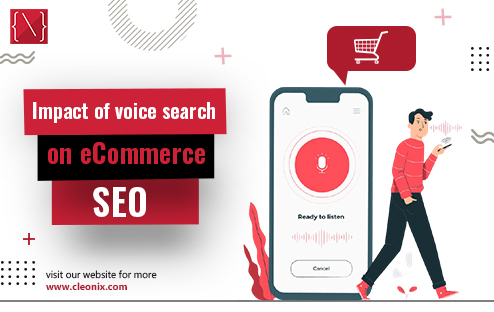
In the ever-evolving landscape of digital marketing, staying ahead of the curve is essential for businesses looking to maintain and enhance their online presence. One of the latest trends reshaping the way consumers interact with the internet is the rise of voice search. As voice-enabled devices like smart speakers and virtual assistants become increasingly popular, their impact on various aspects of online business, particularly eCommerce SEO, cannot be ignored.
The Evolution of Search
Traditional methods of searching, such as typing queries into a search engine, are being complemented and, in some cases, replaced by voice search. The convenience and efficiency of asking a question aloud instead of typing have led to a surge in the adoption of voice-activated devices. Virtual assistants like Amazon’s Alexa, Apple’s Siri, Google Assistant, and Microsoft’s Cortana have become integral parts of people’s daily lives, transforming the way they gather information and make purchasing decisions.
Changing Search Queries
Voice searches tend to differ significantly from text-based searches. When typing a query, users often use concise phrases or keywords, while voice searches tend to be more conversational and natural. For instance, someone might type “best smartphones 2023,” but in a voice search, they might ask, “What are the top-rated smartphones of 2023?” This shift in search behavior has profound implications for eCommerce businesses aiming to optimize their content for search engines.
Long-Tail Keywords Gain Prominence
With the shift towards more conversational queries, the importance of long-tail keywords has increased. These are specific, detailed phrases that users are more likely to use in voice searches. Businesses must adapt their SEO strategies to incorporate these longer, more natural phrases to ensure their products and services are discoverable in voice search results.
Local SEO and Mobile Optimization
Voice searches are often location-specific, with users asking questions like “Where is the nearest electronics store?” This emphasizes the need for robust local SEO strategies for eCommerce businesses. Ensuring that your business’s information is accurate and up-to-date on platforms like Google My Business is crucial for capturing local voice search traffic.
Additionally, mobile optimization plays a significant role, as many voice searches occur on mobile devices. A seamless and mobile-friendly website becomes even more critical to providing a positive user experience and ranking well in voice search results.
The Rise of Featured Snippets
Voice search results are often drawn from featured snippets – concise, information-packed answers that appear at the top of search engine results. Structuring content to provide clear, concise answers to common questions related to your products or services increases the likelihood of your content being featured in voice search results, thereby boosting your visibility and credibility.
Conversational Content is Key
To align with the more conversational nature of voice searches, eCommerce websites need to create content that feels natural when spoken aloud. This involves not only integrating long-tail keywords but also adopting a tone that mimics how people ask questions in real-life conversations. User-friendly, conversational content enhances the overall user experience and increases the chances of being favored by voice search algorithms.
Optimizing Product Information for Voice Search
As voice searches become more prevalent in eCommerce, it’s crucial to optimize product information for this shift in user behavior. This includes creating detailed product descriptions using natural language, incorporating relevant long-tail keywords, and ensuring that your product information is easily digestible for voice-activated devices.
The Future of eCommerce SEO
The impact of voice search on eCommerce SEO is undeniable, and businesses that embrace and adapt to this change will undoubtedly have a competitive advantage. Staying informed about emerging trends, understanding evolving consumer behavior, and continuously optimizing online content for voice search are key strategies for eCommerce success in this dynamic digital landscape.
In conclusion, as voice search continues to reshape the digital landscape, eCommerce businesses must evolve their SEO strategies to remain visible and competitive. By understanding the changing nature of search queries, focusing on local SEO, optimizing for mobile devices, and creating conversational content, businesses can position themselves to thrive in the era of voice-activated search. Embracing these changes today will not only enhance current SEO efforts but also future-proof online businesses in the evolving world of eCommerce.
ALSO READ: Role of UX Design in eCommerce Website Development
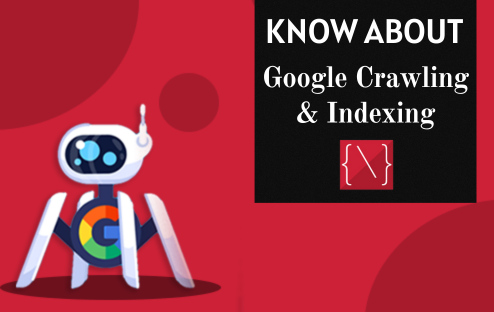
In the vast and ever-expanding world of the internet, search engines serve as our trusty guides, helping us navigate the web’s seemingly endless sea of information. Google, being the most prominent of these digital guides, deploys a complex system to ensure that it efficiently and accurately presents us with the most relevant search results. This system involves two essential processes: crawling and indexing. In this blog, we will delve deep into the world of Google’s crawling and indexing, unveiling the mysteries behind how the search engine makes sense of the internet.
Crawling: The First Step
Crawling is the first step in Google’s process of organizing the web. Imagine the internet as a vast library, and Google’s crawlers as diligent librarians, scouring the shelves for books. In this case, web pages are the books, and crawlers are automated bots or spiders, programmed to methodically traverse the internet.
How Crawling Works
The process begins when Google’s crawlers visit a web page, typically by following links from other pages or through a sitemap submitted by website owners. The bot then downloads the page’s HTML content, analyzes it, and follows any links found within the content. This process continues, forming a vast network of interconnected pages. It’s worth noting that Googlebot doesn’t view websites like humans do; instead, it relies on the HTML source code and text content.
Crawling Frequency
Not all websites are crawled with the same frequency. Google assigns a crawl budget to each site, considering factors such as the site’s importance, update frequency, and server response time. High-quality, frequently updated websites usually get crawled more often, while low-quality or rarely updated sites may be crawled less frequently.
Robots.txt and Meta Robots
Website owners have the ability to control what parts of their site are crawled through a file called ‘robots.txt’ and by using ‘meta robots’ tags in their HTML. These tools allow site owners to exclude specific pages or directories from being crawled by Google.
Indexing: The Second Step
Once a page is crawled and its content is analyzed, Google adds it to its vast database, also known as the index. The index is like a giant catalog of the internet’s content, allowing Google to quickly retrieve and display relevant search results to users.
How Indexing Works
Google’s indexing process involves parsing and storing the information from a web page. This information includes text content, images, videos, and even structured data like schema markup. This stored data is then analyzed and sorted, making it easier to retrieve when a user conducts a search query.
Duplicate Content
One critical aspect of indexing is managing duplicate content. Duplicate content can confuse search engines and negatively impact a site’s search rankings. Google’s indexing system aims to identify and consolidate duplicate pages, ensuring that only one version is stored in the index.
Updating the Index
The index is not static; it’s constantly updated to reflect changes on the web. When Google’s crawlers revisit a page and detect changes, the index is updated accordingly. This process ensures that search results are current and relevant to users.
The Connection between Crawling and Indexing
The relationship between crawling and indexing is intimate. Crawling provides the raw data, and indexing organizes and makes sense of this data. When a user enters a search query, Google’s search algorithms consult the index to provide the most relevant results.
The efficiency and accuracy of this process depend on how well Googlebot crawls and how comprehensively Google’s index reflects the content of the web. For website owners and digital marketers, understanding this relationship is crucial, as it helps optimize a site’s visibility in search results.
Best Practices for Website Owners
Now that we have a better grasp of Google’s crawling and indexing processes, let’s explore some best practices for website owners:
Optimize Crawlability: Ensure that your website is easily crawlable by organizing your site structure, using clear and concise HTML, and creating a sitemap.
Quality Content: Publish high-quality, relevant content that engages users. Google’s algorithms favor fresh, unique, and valuable content.
Mobile-Friendly: With the mobile-first indexing approach, it’s essential to have a mobile-friendly website for a broader reach.
Page Speed: Fast-loading pages are essential for a good user experience and can positively impact your search rankings.
HTTPS: Secure your website with HTTPS, as Google prefers secure sites and ranks them higher.
Structured Data: Implement structured data markup (schema.org) to enhance the visibility of rich snippets in search results.
Regular Updates: Keep your site fresh and updated, as this encourages Google to crawl and index your site more frequently.
Duplicate Content: Avoid duplicate content issues by using canonical tags or redirects to specify the preferred version of a page.
Robot Directives: Use robots.txt and meta robots tags to control which parts of your site are crawled.
Monitor Performance: Regularly check your site’s performance in Google Search Console to identify crawl and indexing issues.
Conclusion
Google’s crawling and indexing processes are the backbone of the search engine’s ability to provide users with relevant and up-to-date information from the vast expanse of the internet. Understanding these processes and implementing best practices can significantly impact a website’s visibility and search rankings.
Website owners and digital marketers should continuously adapt to the evolving landscape of SEO and search engine algorithms, ensuring their sites are not only crawled but also indexed effectively. By doing so, they can harness the immense power of Google to connect with a global audience and provide valuable information to those in search of answers, products, or services.
ALSO READ: How Schema Markup Contributes to Your SEO Ranking?
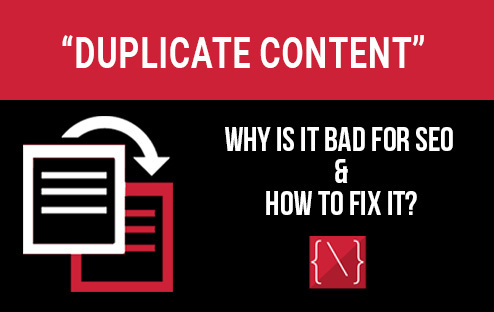
When it comes to search engine optimization (SEO), content is king. High-quality, unique content can help your website rank higher in search engine results, drive organic traffic, and establish your authority in your niche. However, there’s a dark side to content that many website owners and marketers often overlook or underestimate: duplicate content. In this comprehensive guide, we’ll explore what duplicate content is, why it’s bad for SEO, and most importantly, how to fix it.
What is Duplicate Content?
Duplicate content refers to identical or substantially similar content that appears in more than one location on the internet. This can happen both within your own website and across different websites. Duplicate content can manifest in various forms:
- Internal Duplicate Content: This occurs when the same or very similar content appears on multiple pages within the same website. For example, you might have two product pages with nearly identical descriptions.
- External Duplicate Content: This happens when identical or highly similar content is found on different websites. It could be the result of scraping content from other sites, syndicating articles, or even using the same product descriptions as many other online retailers.
- Printer-Friendly Versions: Often, websites offer printer-friendly versions of their content, which can lead to duplicate content issues if search engines index both the original and printer-friendly versions.
- WWW vs. Non-WWW: If your website is accessible via both the www and non-www versions (e.g., www.example.com and example.com) and both display the same content, search engines might treat it as duplicate content.
- HTTP vs. HTTPS: Similar to the www vs. non-www issue, if your site is available through both HTTP and HTTPS, search engines may see this as duplicate content.
ALSO READ: What is Social Bookmarking and How does it work for SEO?
Why is Duplicate Content Bad for SEO?
Duplicate content can have a detrimental impact on your website’s SEO for several reasons:
- Keyword Confusion: When search engines encounter duplicate content, they struggle to determine which version is the most relevant to a user’s query. This can lead to your pages competing against each other in search results.
- Ranking Dilution: Instead of consolidating the ranking power of a single page, duplicate content splits the ranking potential across multiple pages. As a result, none of your pages perform as well as they could individually.
- Crawl Budget Waste: Search engines allocate a limited crawl budget to each website. Duplicate content consumes this budget unnecessarily, preventing search engines from indexing more valuable and unique pages on your site.
- Penalties: In some cases, Google may penalize websites for hosting duplicate content, resulting in lower rankings or even removal from search results.
- User Experience: Duplicate content can confuse and frustrate users who may click on different pages with identical information. This can lead to a high bounce rate and reduced user satisfaction.
How to Fix Duplicate Content Issues
Now that we understand the consequences of duplicate content, let’s explore strategies to identify and resolve these issues effectively:
1. Conduct a Content Audit
Start by conducting a thorough content audit of your website. Identify pages with duplicate content issues, both internally and externally. Tools like Screaming Frog, SEMrush, or Google Search Console can help you identify duplicate content.
2. Choose a Preferred Domain
Decide whether you want your website to be accessible via www or non-www, and HTTP or HTTPS. Configure your website’s settings and use 301 redirects to ensure all traffic is directed to your preferred domain and protocol.
3. Canonical Tags
Use canonical tags to specify the preferred version of a page when you have similar content on multiple pages. Search engines will then consolidate ranking signals to the canonical URL, minimizing the risk of duplicate content issues.
4. Rewrite or Update Content
For internal duplicate content issues, consider rewriting or updating the content to make it unique. Each page on your site should offer distinct value to users.
5. Implement 301 Redirects
For external duplicate content issues, reach out to the webmasters of the offending websites and request that they either remove the duplicate content or add a canonical tag to your original content. Alternatively, you can use 301 redirects to signal to search engines which version is the preferred one.
6. Use Noindex Tags
For printer-friendly versions or other non-essential duplicate content, consider using “noindex” meta tags to prevent search engines from indexing those pages.
7. Syndication Best Practices
If you syndicate content to other websites, use proper attribution and canonical tags to ensure your original content gets the credit it deserves.
8. Monitor and Maintain
Regularly monitor your website for new instances of duplicate content and address them promptly. As your website evolves, ensure that you continue to follow best practices for avoiding duplicate content.
In Conclusion
Duplicate content is a common issue that can harm your website’s SEO efforts. By understanding what it is, why it’s bad, and how to fix it, you can ensure that your website provides valuable, unique content to both users and search engines. A well-optimized, duplicate-free site will help you climb the search engine rankings, attract more organic traffic, and establish your brand’s authority in your industry. So, take action today to address any duplicate content issues on your website and reap the benefits of improved SEO performance.
ALSO READ: How Schema Markup Contributes to Your SEO Ranking?

In the ever-evolving landscape of digital marketing, staying ahead of the curve is essential for businesses aiming to improve their online visibility and drive organic traffic to their websites. Search Engine Optimization (SEO) remains a cornerstone of this effort, and staying up-to-date with the latest SEO techniques is crucial. One such technique that has gained significant attention in recent years is Schema Markup.
Schema Markup, often referred to simply as Schema, is a powerful tool that helps search engines understand the content on your website better. By providing structured data in a standardized format, you can enhance the way search engines interpret your web pages, resulting in improved rankings and better visibility. In this blog post, we’ll delve into the world of Schema Markup and explore how it contributes to your SEO ranking.
Understanding Schema Markup
Before we delve into its SEO benefits, let’s break down what Schema Markup is and how it works. Schema Markup is a type of microdata that you can add to your website’s HTML to provide search engines with additional information about your content. This additional information is then used by search engines to create rich snippets, which are the small pieces of information that appear in search results. Rich snippets can include details like star ratings, images, prices, and more, making your search result more attractive and informative to users.
Schema Markup uses a vocabulary of tags (or schemas) that define different types of content, such as articles, events, products, and more. By implementing these tags on your web pages, you can tell search engines exactly what each piece of content is and provide structured information about it. This structured data helps search engines index and display your content more accurately.
ALSO READ: How Important Are Core Web Vitals for Search Engine Optimization?
The SEO Benefits of Schema Markup
Now that we have a basic understanding of what Schema Markup is, let’s explore how it can benefit your SEO efforts:
1. Enhanced Visibility in Search Results
One of the most significant advantages of Schema Markup is its ability to enhance the appearance of your search results. Rich snippets created using Schema Markup can make your listings stand out in search engine results pages (SERPs). For example, if you’re a restaurant owner and you implement Schema Markup for your menu items, your search result might include star ratings and prices right in the search listing. This additional information can increase the click-through rate (CTR) to your website, driving more organic traffic.
2. Improved Click-Through Rates
Schema Markup not only makes your listings more visually appealing but also more informative. When users see detailed information in the search results, they are more likely to click on your link because they have a clearer understanding of what your page offers. This improved CTR can have a positive impact on your SEO ranking, as search engines often consider the click-through rate as a ranking factor.
3. Better Understanding of Content
Schema Markup helps search engines understand the context of your content. When search engines can interpret your content more accurately, they are more likely to rank your pages higher for relevant search queries. For instance, if you run an e-commerce site and use Schema Markup to define your product pages, search engines can understand the product’s name, price, availability, and more. This information allows them to display your products to users searching for specific products or price ranges.
4. Local SEO Boost
If you have a brick-and-mortar business, implementing Schema Markup can significantly benefit your local SEO efforts. Schema can provide information about your business’s location, contact details, operating hours, and reviews. This information is crucial for local search engine optimization, as it helps search engines connect your business to local search queries, ultimately driving more foot traffic to your physical location.
5. Voice Search Optimization
With the rise of voice search, Schema Markup becomes even more valuable. Voice assistants like Siri, Google Assistant, and Alexa rely on structured data to provide accurate answers to users’ questions. By implementing Schema Markup on your website, you increase the chances of your content being selected as a voice search result, which can be a game-changer in terms of SEO and driving organic traffic.
Implementing Schema Markup
To leverage the SEO benefits of Schema Markup, you need to implement it correctly. Here are some steps to get started:
- Identify Appropriate Schema Types: Determine which Schema types are relevant to your content. This might include schemas for articles, products, reviews, events, and more.
- Add Schema Markup to Your HTML: You can manually add Schema Markup to your HTML code, or you can use tools like Google’s Structured Data Markup Helper or Schema.org’s generator to create the code.
- Test Your Markup: Use Google’s Structured Data Testing Tool to ensure that your Schema Markup is error-free and displays correctly.
- Monitor and Update: Regularly monitor your search results to see how your rich snippets are performing. Make adjustments and updates as necessary to maximize their impact.
ALSO READ: Some Best Yoast SEO Alternatives to Handle Your WordPress SEO
Conclusion
In the competitive world of online marketing, every edge counts, and Schema Markup is one of those edges that can make a significant difference. By providing structured data to search engines, you not only enhance the visibility of your content in search results but also improve your click-through rates, which can ultimately boost your SEO ranking.
As search engines continue to evolve and prioritize user experience, implementing Schema Markup is becoming increasingly crucial. It’s a relatively simple yet highly effective way to give your SEO efforts a competitive advantage and ensure that your website ranks well in the ever-changing digital landscape. So, if you’re looking to improve your SEO ranking and drive more organic traffic, Schema Markup should definitely be a part of your strategy.

In the ever-evolving landscape of digital marketing, staying ahead of the curve is not just an option; it’s a necessity. As businesses strive to connect with their audiences in a rapidly changing digital world, one technology is emerging as a game-changer: Artificial Intelligence (AI). AI-powered digital marketing is revolutionizing the way businesses reach, engage, and convert customers. In this blog post, we’ll delve deep into the world of AI in digital marketing, exploring its transformative potential, its impact on various aspects of advertising, and why it’s the future of marketing.
The Digital Marketing Landscape
Before we delve into the role of AI, let’s set the stage by understanding the modern digital marketing landscape. In today’s digital age, businesses are vying for consumers’ attention in a crowded online marketplace. Traditional marketing tactics are no longer sufficient to cut through the noise and drive meaningful results. Digital marketing, which encompasses a wide range of online channels such as social media, email, search engines, and websites, has become the go-to strategy for businesses seeking to expand their reach and boost their bottom line.
The Rise of Artificial Intelligence
Enter Artificial Intelligence. AI, the simulation of human intelligence by machines, is fundamentally changing how businesses approach digital marketing. It enables companies to leverage data-driven insights and automation to create more personalized and effective marketing campaigns. AI algorithms analyze massive amounts of data faster and more accurately than any human could, making it an invaluable tool in today’s data-driven marketing landscape.
AI-Powered Personalization
One of the most significant advantages of AI in digital marketing is its ability to deliver personalized content and experiences to users. Traditional marketing campaigns often relied on a one-size-fits-all approach, which, more often than not, led to missed opportunities and wasted resources. AI, on the other hand, enables marketers to tailor their messages, products, and services to the individual preferences and behaviors of each customer.
For instance, AI can analyze a user’s browsing history, purchase history, and interactions with a website to recommend products or content that are highly relevant to them. This level of personalization not only enhances the user experience but also increases the likelihood of conversions and customer loyalty.
ALSO READ: Ultimate Yoast SEO Tutorial: From Beginner to Pro in Just 7 Steps
Enhanced Customer Engagement
Engaging customers in a meaningful way is a core goal of digital marketing, and AI is proving to be a powerful ally in achieving this objective. AI chatbots, for example, are becoming increasingly common on websites and social media platforms. These chatbots can provide instant responses to customer inquiries, offer product recommendations, and even assist with the purchasing process. By offering quick and relevant assistance, AI-powered chatbots enhance customer engagement and satisfaction.
Moreover, AI can analyze user behavior and preferences to determine the best times to send emails, post on social media, or run advertising campaigns. This data-driven approach ensures that marketing efforts are well-timed and have a higher chance of resonating with the target audience.
Predictive Analytics
Predictive analytics is another area where AI shines in digital marketing. By analyzing historical data and identifying patterns, AI can make accurate predictions about future trends, customer behavior, and market shifts. This allows businesses to stay ahead of the competition by making informed decisions and adjusting their marketing strategies accordingly.
For instance, AI can predict which products are likely to be popular in the upcoming holiday season, enabling retailers to stock inventory accordingly and plan targeted marketing campaigns.
Cost Efficiency and ROI
AI-powered digital marketing isn’t just about delivering better results; it’s also about doing so more efficiently. AI can automate repetitive tasks such as data analysis, content curation, and ad optimization. This automation not only saves time but also reduces the risk of human error.
Furthermore, AI algorithms can continuously monitor and adjust advertising campaigns in real-time to maximize return on investment (ROI). If a particular ad isn’t performing well, AI can quickly identify the issue and make necessary adjustments to improve its effectiveness. This level of optimization is nearly impossible to achieve through manual methods alone.
Challenges and Ethical Considerations
While AI offers tremendous benefits to digital marketing, it also presents challenges and ethical considerations. Privacy concerns, data security, and the potential for bias in AI algorithms are all important issues that marketers must navigate responsibly. It’s essential to strike a balance between harnessing the power of AI and respecting user privacy and data protection regulations.
ALSO READ: Necessary Points to Remember For Email Marketing – Tips, Tricks & Ideas
The Future of Advertising
In conclusion, AI-powered digital marketing is reshaping the advertising landscape. Its ability to deliver personalized content, enhance customer engagement, leverage predictive analytics, and optimize campaigns for cost efficiency is propelling businesses toward greater success in the digital age. As AI continues to advance and become more accessible, it will undoubtedly play an even more significant role in the future of advertising.
Businesses that embrace AI in their digital marketing strategies will have a competitive edge, reaching and connecting with their target audience in ways that were previously unimaginable. The future of advertising is here, and it’s AI-powered. Are you ready to harness its transformative potential?
Stay tuned as we explore more AI-driven innovations in the dynamic world of digital marketing, where the only constant is change. The future is now, and it’s powered by Artificial Intelligence.
Remember, the key to success is not just embracing technology but also using it ethically and responsibly to create meaningful and engaging experiences for your customers in the digital realm.

In today’s digital age, having a strong online presence is essential for businesses and individuals alike. Search Engine Optimization (SEO) plays a crucial role in ensuring your website is discoverable by search engines and, consequently, by your target audience. Among the myriad of SEO tools available, Yoast SEO stands out as a powerful and user-friendly plugin for WordPress users. In this comprehensive tutorial, we will take you from a beginner’s understanding of Yoast SEO to mastering its advanced features in just 7 steps. Get ready to unlock the potential of your website and soar up the search rankings!
Step 1: Introduction to Yoast SEO
Let’s start with the basics. Yoast SEO is a plugin designed to simplify the process of optimizing your website’s content for search engines. It offers a range of tools and features that guide you through the intricate world of SEO, even if you’re not an expert. Installing Yoast SEO is straightforward; navigate to your WordPress dashboard, click on “Plugins,” then “Add New,” and search for “Yoast SEO.” Install and activate the plugin, and you’re ready to begin!
Step 2: Basic Configuration
Upon activation, Yoast SEO provides a configuration wizard that guides you through the initial setup. This wizard helps you configure essential settings like your site’s name, whether it’s a company or a person, and your preferred separator for title tags. You can also set up your social media profiles, which Yoast SEO will integrate into your website’s metadata. These initial steps lay the foundation for effective SEO practices.
Step 3: Keyword Research
Keywords are the heart of SEO. Identifying the right keywords ensures your content reaches the right audience. Use tools like Google Keyword Planner or Ubersuggest to find relevant keywords with a balance between search volume and competition. Once you have your keywords, Yoast SEO’s “Focus Keyphrase” feature helps you integrate them strategically into your content.
ALSO READ: What is Image SEO and How to Optimize Images for Search Engines?
Step 4: Optimizing Content
Creating high-quality content is essential, but optimizing it for search engines is equally important. Yoast SEO’s real-time content analysis provides valuable suggestions for improving your content’s SEO. It evaluates factors like keyword usage, readability, internal and external links, and more. The plugin’s color-coded indicators (red, orange, green) make it easy to gauge your content’s optimization status at a glance.
Step 5: Crafting SEO-Friendly Titles and Meta Descriptions
Your page’s title tag and meta description are prime real estate for attracting clicks from search engine result pages (SERPs). Yoast SEO allows you to customize these elements, ensuring they are both keyword-rich and engaging. The plugin provides a preview of how your page will appear in search results, allowing you to fine-tune your titles and meta descriptions for maximum impact.
Step 6: Technical SEO and XML Sitemaps
Technical SEO involves optimizing the technical aspects of your website for better search engine crawling and indexing. Yoast SEO helps simplify this process by generating XML sitemaps – a roadmap for search engines to navigate your site’s structure. Additionally, the plugin offers features to set canonical URLs, manage breadcrumbs, and control the indexing of specific pages.
Step 7: Readability and On-Page SEO
Great content isn’t just about keywords; it’s also about readability. Yoast SEO evaluates your content’s readability using the Flesch Reading Ease test, providing suggestions to enhance the overall user experience. Remember, user-friendly content is likely to keep visitors on your site longer, reducing bounce rates and potentially improving search rankings.
Becoming a Yoast SEO Pro
As you become more comfortable with the basic features of Yoast SEO, consider exploring its premium version. Yoast SEO Premium offers advanced features like internal linking suggestions, content insights, and redirect management, taking your SEO efforts to the next level.
In conclusion, mastering Yoast SEO is a journey that requires consistent effort and learning. This tutorial has provided you with a solid foundation to start optimizing your website effectively. From understanding the basics to implementing advanced strategies, you now have the tools to enhance your online presence and climb the search engine rankings. So, go ahead and take control of your website’s destiny with the power of Yoast SEO!
ALSO READ: How Important Are Core Web Vitals for Search Engine Optimization?
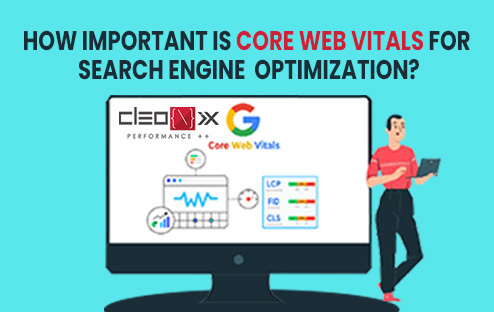
In the ever-evolving digital landscape, search engine optimization (SEO) has become a critical aspect of any successful online presence. With millions of websites vying for the top spot in search engine results, it’s crucial to stay ahead of the game. One of the recent advancements that have significantly impacted SEO is the introduction of Core Web Vitals by Google. These metrics are designed to assess the user experience on websites and are now considered vital for improving search rankings. In this blog, we will explore what Core Web Vitals are, why they are important for SEO, and how businesses can optimize their websites to meet these requirements and stay competitive in the online world.
1. Understanding Core Web Vitals:
Core Web Vitals are a set of user-centric metrics introduced by Google to measure the overall performance and user experience of websites. They focus on three key aspects:
1.1. Largest Contentful Paint (LCP): This metric measures the time it takes for the main content of a page to load. Ideally, it should occur within the first 2.5 seconds after the page starts loading. A fast LCP ensures that users can access the most crucial information quickly, leading to better user experience and satisfaction.
1.2. First Input Delay (FID): FID measures the responsiveness of a website by evaluating the time it takes for a page to become interactive. Users should be able to interact with the page within 100 milliseconds to have a smooth and seamless browsing experience.
1.3. Cumulative Layout Shift (CLS): CLS gauges the visual stability of a page by assessing the unexpected layout shifts during loading. A good CLS score ensures that elements on a page do not move around unexpectedly, preventing accidental clicks and user frustration.
2. Why Core Web Vitals Matter for SEO:
Google, being the dominant search engine, is constantly striving to provide users with the best possible experience. To achieve this, Google uses a wide range of ranking factors, and Core Web Vitals have emerged as crucial components in determining a website’s search ranking. Here’s why Core Web Vitals matter for SEO:
2.1. User Experience is Paramount: Google’s primary goal is to satisfy user intent. Websites that offer a seamless and positive user experience are more likely to rank higher in search results. Core Web Vitals provide a standardized way to assess user experience across websites, leading to better rankings for those that prioritize their visitors.
2.2. Mobile-First Indexing: With the majority of internet users now browsing on mobile devices, Google has shifted to mobile-first indexing. This means that Google uses the mobile version of a website for indexing and ranking. Core Web Vitals are even more critical for mobile SEO as they directly impact mobile user experience.
2.3. Page Experience Update: In May 2021, Google rolled out a significant algorithm update called the “Page Experience Update.” This update incorporated Core Web Vitals as ranking signals, underscoring their importance for SEO. Websites that meet the Core Web Vitals thresholds are more likely to gain a competitive edge in search rankings.
3. Optimizing for Core Web Vitals: Given the significance of Core Web Vitals for SEO, website owners and SEO professionals must optimize their sites accordingly. Here are some strategies to improve Core Web Vitals scores:
3.1. Optimize Page Speed: To improve LCP and FID scores, focus on optimizing your website’s loading speed. Compress images, leverage browser caching, and use a content delivery network (CDN) to reduce server response times.
3.2. Prioritize Above-the-Fold Content: Ensure that critical above-the-fold content loads quickly, providing users with essential information as soon as possible.
3.3. Minimize JavaScript Execution: Reducing unnecessary JavaScript execution can significantly impact FID, as complex scripts may delay interactivity. Consider lazy loading for non-essential scripts.
3.4. Ensure Visual Stability: Prevent unexpected layout shifts by specifying dimensions for images and other media elements. This will improve your CLS score.
3.5. Mobile Optimization: Given the prominence of mobile users, prioritize mobile optimization to meet Core Web Vitals on mobile devices.
Conclusion:
In the competitive world of online business, staying ahead of the curve in SEO is vital for success. Core Web Vitals, introduced by Google to evaluate user experience, have become an integral part of the search ranking algorithm. Websites that prioritize speed, responsiveness, and visual stability will reap the rewards of higher search rankings and increased user satisfaction. Embracing Core Web Vitals as a central aspect of your SEO strategy will not only help your website thrive but also demonstrate your commitment to delivering the best possible user experience. So, don’t overlook the importance of Core Web Vitals – optimize your website today and pave the way for better search engine visibility and improved user engagement.
ALSO READ: Top 11 Game-Changing SEO Trends That Will Dominate in 2023

Email marketing remains one of the most effective and essential tools for businesses to connect with their audience. Despite the rise of social media and other digital marketing channels, email still offers a direct and personal way to engage customers, generate leads, and drive sales. However, to make the most out of your email marketing efforts, you need to follow some best practices and consider a few important points. In this blog post, we’ll explore some necessary points to remember for email marketing, along with valuable tips, tricks, and creative ideas.
1. Build a Quality Email List
A successful email marketing campaign begins with a high-quality email list. Avoid purchasing email lists, as they are often filled with uninterested or spam-sensitive recipients. Instead, focus on growing an organic list through sign-up forms on your website, lead magnets, and other opt-in strategies. Segment your list based on demographics, interests, or engagement levels for targeted and personalized content delivery.
2. Create Compelling Subject Lines
Subject lines are the gatekeepers of your emails. A compelling subject line can entice recipients to open your email, while a lackluster one might send it straight to the trash. Keep subject lines concise, clear, and relevant to the content inside the email. Use action-oriented language, urgency, and personalization to capture the reader’s attention.
3. Craft Engaging Content
Once your email is opened, the content needs to be engaging and valuable. Understand your audience’s pain points and provide solutions, offer exclusive promotions, share relevant news, or provide entertaining content. Use a mix of text, images, and videos to keep the email visually appealing and scannable.
4. Mobile Responsiveness is Key
In today’s mobile-driven world, your emails must be responsive and look great on various devices. Many users check their emails on smartphones or tablets, so optimizing your emails for mobile viewing is essential. Test your email designs on different devices and email clients to ensure a seamless user experience.
5. Personalization and Segmentation
Email personalization goes beyond addressing the recipient by their first name. Leverage data from your email marketing platform to deliver targeted content based on customer behavior, preferences, and purchase history. Segment your email list to send relevant messages to specific groups, increasing the likelihood of engagement and conversions.
6. Avoid Spam Traps
To ensure your emails reach your subscribers’ inboxes, avoid common spam triggers. Don’t use excessive punctuation, excessive capitalization, or trigger words commonly associated with spam. Always include an easy-to-find unsubscribe link to comply with anti-spam regulations and improve your sender reputation.
7. Timing Matters
Timing plays a crucial role in email marketing success. Sending emails at the right time increases open rates and engagement. Use data from your email analytics to determine when your audience is most active and adjust your sending schedule accordingly.
8. A/B Testing
Experimentation is key to improvement. Conduct A/B tests (split tests) on different elements of your emails, such as subject lines, CTAs, visuals, and content. Analyze the results to identify what resonates best with your audience and optimize your future email campaigns accordingly.
9. Clear Call-to-Action (CTA)
Your email should have a clear and compelling CTA that guides readers towards the desired action. Whether it’s making a purchase, signing up for an event, or downloading a resource, the CTA should stand out and be easy to follow.
10. Monitor and Analyze Results
Regularly track and analyze the performance of your email campaigns. Use metrics like open rates, click-through rates, conversion rates, and unsubscribe rates to gauge the success of your campaigns. Utilize these insights to refine your strategies and continually improve your email marketing efforts.
11. Avoid Overloading with Emails
Be cautious not to bombard your subscribers with too many emails. Frequency is essential, and sending emails too frequently might lead to higher unsubscribe rates or email fatigue. Find the right balance between staying present and being respectful of your audience’s inbox.
12. Maintain Consistency and Branding
Consistency in your email marketing efforts helps reinforce your brand identity and builds trust with your audience. Use consistent branding elements like logo, colors, and tone of voice across all your emails. This familiarity helps subscribers recognize your emails instantly and creates a sense of reliability.
13. Automate with Drip Campaigns
Drip campaigns are a series of automated emails sent based on specific triggers or user actions. They allow you to nurture leads, onboard new customers, and re-engage inactive subscribers without manual intervention. Utilize automation to save time and deliver timely and relevant content to your audience.
14. Celebrate Milestones and Events
Don’t miss opportunities to celebrate milestones, special occasions, or holidays with your subscribers. Sending personalized birthday wishes or anniversary offers can make your subscribers feel valued and strengthen the relationship with your brand.
15. Include Social Sharing Options
Encourage your email recipients to share your content on social media by including social sharing buttons. This extends the reach of your emails beyond your subscriber list and can lead to new subscribers and increased engagement.
Conclusion
Email marketing remains a powerful tool for businesses to connect with their audience and drive results. By following these necessary points, incorporating valuable tips and tricks, and experimenting with creative ideas, you can optimize your email marketing campaigns for success. Remember, effective email marketing is all about delivering value, building relationships, and staying relevant in the eyes of your subscribers. Stay consistent, stay customer-focused, and watch your email marketing efforts yield impressive results.
ALSO READ: How to Grow Your Business Rapidly through WhatsApp Marketing

In today’s fast-paced digital world, businesses are constantly seeking new and effective ways to reach and engage with their target audience. WhatsApp, the popular messaging app, has evolved beyond personal communication and has become a powerful marketing tool for businesses worldwide. With over 2 billion active users, WhatsApp provides a unique opportunity to connect with customers, build relationships, and drive sales. In this article, we will explore how you can leverage WhatsApp marketing to grow your business and achieve your goals.
Build a Strong Foundation:
Before diving into WhatsApp marketing, it’s crucial to establish a strong foundation for your business. Define your target audience, understand their needs, and develop a clear value proposition. This foundation will guide your messaging and help you tailor your WhatsApp marketing strategy to resonate with your audience effectively.
Create a Professional Business Profile:
To establish credibility and professionalism on WhatsApp, create a dedicated business profile. Use your brand logo as the profile picture and include relevant information such as your business name, contact details, and a brief description of your products or services. A professional profile will instill trust in your customers and make your business appear more legitimate.
Build and Grow Your Contact List:
WhatsApp marketing relies on having a robust contact list of potential and existing customers. Promote your WhatsApp presence across various channels, such as your website, social media platforms, and email newsletters, to encourage people to join your WhatsApp community. You can also offer incentives, exclusive content, or special discounts to entice users to sign up.
Provide Valuable and Relevant Content:
One of the keys to successful WhatsApp marketing is delivering valuable and relevant content to your audience. Avoid bombarding them with promotional messages; instead, focus on providing information, tips, and engaging content that aligns with their interests. By consistently delivering valuable content, you can position your business as an authority and build trust with your customers.
Use WhatsApp Business Features:
WhatsApp offers several features specifically designed for businesses to enhance their marketing efforts. Utilize features like WhatsApp Business API, automated messaging, quick replies, and chatbots to streamline communication, provide instant customer support, and manage large volumes of messages efficiently. These tools can save time and resources while delivering a seamless user experience.
Personalize and Segment Your Messages:
Segmenting your WhatsApp contacts into different groups based on demographics, interests, or past interactions allows you to personalize your messages. Sending targeted messages that cater to specific segments increases the relevance and effectiveness of your marketing campaigns. Personalization helps foster a deeper connection with your audience and improves engagement rates.
Run Contests and Promotions:
Engage your WhatsApp audience by running contests, giveaways, or exclusive promotions. This approach not only encourages user participation but also creates a buzz around your brand. For example, you can offer special discounts or access to limited-time offers exclusively for your WhatsApp subscribers. Contests and promotions can generate excitement and motivate users to share your brand with their contacts.
Enable Two-Way Communication:
WhatsApp is not just about broadcasting messages; it also allows for interactive and two-way communication. Encourage your customers to ask questions, provide feedback, and share their experiences. Promptly respond to their queries and be proactive in addressing their concerns. Building a strong customer relationship through direct communication can boost customer loyalty and generate positive word-of-mouth referrals.
Leverage WhatsApp for Sales and Support:
WhatsApp can be a powerful tool for sales and customer support. Allow customers to inquire about products, make purchases, and track their orders through WhatsApp. Enable a seamless purchase experience by integrating a secure payment gateway directly into the messaging app. Additionally, provide quick and efficient support by promptly addressing customer inquiries and resolving issues, which can result in increased customer satisfaction and repeat business.
Measure and Analyze Results:
Like any marketing strategy, it’s essential to measure and analyze the results of your WhatsApp marketing efforts. WhatsApp Business provides built-in analytics that allow you to track metrics such as message delivery, open rates, and engagement levels. Pay attention to these metrics and use the insights gained to refine your strategies, improve your messaging, and optimize your campaigns for better results.
Maintain Privacy and Security:
When using WhatsApp for business purposes, it is crucial to respect your customers’ privacy and ensure their data is secure. Adhere to WhatsApp’s terms of service, respect anti-spam regulations, and obtain proper consent before sending marketing messages. Protect your customers’ data by implementing secure encryption protocols and keeping their personal information confidential.
Stay Updated with WhatsApp Updates and Features:
WhatsApp continuously introduces new features and updates to improve user experience and enhance business capabilities. Stay updated with these changes to leverage the latest tools and features that can benefit your business. Regularly check for updates, explore new features, and adapt your strategies accordingly to stay ahead of the competition.
Conclusion
WhatsApp marketing offers immense potential for businesses to grow their reach, engage with customers, and drive sales. By following the strategies outlined in this article, you can establish a strong WhatsApp marketing presence and effectively connect with your target audience. Remember to provide valuable content, personalize your messages, leverage WhatsApp features, and maintain open and responsive communication with your customers. As you navigate the world of WhatsApp marketing, consistently analyze your results and make necessary adjustments to optimize your efforts. Embrace the power of WhatsApp and unlock new opportunities for your business’s growth.
ALSO READ: What is Influencer Marketing And How It Can Help in SEO in 2023?
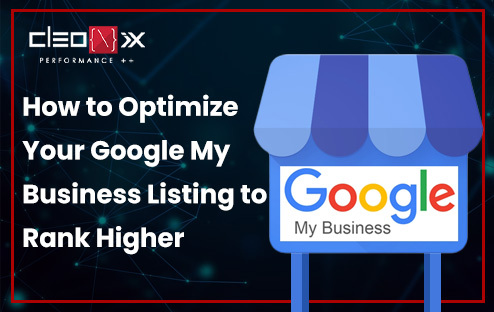
In today’s digital age, having a strong online presence is crucial for the success of any business. And when it comes to local search, Google My Business (GMB) is a powerful tool that can significantly impact your visibility and attract potential customers. By optimizing your GMB listing, you can improve your chances of ranking higher in local search results, increasing your online visibility, and ultimately driving more traffic to your business. In this article, we will explore effective strategies to optimize your Google My Business listing and enhance your chances of ranking higher.
- Claim and Verify Your GMB Listing: The first step towards optimizing your GMB listing is to claim and verify it. Visit the Google My Business website, create an account if you don’t have one, and follow the steps to claim your business. Verification can be done via mail, phone, email, or instant verification (available for select businesses). Once verified, you’ll gain access to a range of features and options to enhance your listing.
- Complete Your Business Information: To rank higher in local search results, provide Google with as much accurate and detailed information as possible. Fill out all the fields in your GMB profile, including your business name, address, phone number, website URL, category, hours of operation, and a brief description. Make sure the information is consistent across all online platforms.
- Choose the Right Categories: Selecting the appropriate categories for your business is crucial. Be specific and choose categories that accurately represent your products or services. This helps Google understand your business and display it in relevant search results. You can select a primary category and add secondary categories if applicable.
- Optimize Your Business Description: Craft a compelling business description that effectively communicates your unique selling points and key offerings. Keep it concise, engaging, and keyword-rich. Incorporate relevant keywords naturally without keyword stuffing, as this can have a negative impact on your ranking.
- Add High-Quality Photos: Visual content plays a vital role in attracting potential customers. Include high-quality photos that showcase your business, products, and services. This can significantly impact user engagement and help differentiate your business from competitors. Upload appealing images of your storefront, interior, team, products, and any other relevant visuals that represent your brand effectively.
- Encourage Positive Reviews: Online reviews are an essential aspect of your GMB listing. Positive reviews not only boost your credibility but also contribute to higher rankings. Encourage satisfied customers to leave reviews on your GMB profile. Respond to reviews, both positive and negative, to show your engagement and willingness to address customer concerns.
- Maintain Consistent NAP Information: NAP stands for Name, Address, and Phone Number. Consistency is key when it comes to your NAP information. Ensure that your business name, address, and phone number are accurate and consistent across your GMB listing, website, social media profiles, and other directories. Inconsistent information can confuse both users and search engines, negatively impacting your ranking.
- Leverage Google Posts: Google Posts allow you to share timely updates, offers, events, or any other relevant content directly on your GMB listing. Take advantage of this feature to engage with your audience and provide them with valuable information. Regularly posting fresh content can help improve your visibility and drive more traffic to your business.
- Utilize Google Questions & Answers: The Questions & Answers section on your GMB listing enables potential customers to ask questions about your business, products, or services. Monitor this section and respond promptly to provide accurate information. By being proactive and addressing inquiries, you can build trust and establish yourself as an authority in your industry.
- Monitor Insights and Analytics: Google provides valuable insights and analytics for your GMB listing. Pay attention to these metrics to understand user behavior, search queries, and how people are finding and engaging with your business. This data can help you make informed decisions and further optimize your listing for better results.
Conclusion:
Optimizing your Google My Business listing is a powerful way to boost your online visibility and attract more local customers. By following the strategies outlined in this article, you can improve your chances of ranking higher in local search results. Remember to regularly update and maintain your listing, respond to reviews and inquiries, and provide accurate information. By leveraging the full potential of Google My Business, you can take a significant step towards growing your business in the digital landscape.
ALSO READ: What is Social Bookmarking and How does it work for SEO?
About the author
Cleonix Technologies
A professional Web Development Company is highly focused on providing world class and best in the industry standard services in every domain that we work upon.

 AJ 14, Salt Lake, Sector 2, Kolkata - 700091 |
AJ 14, Salt Lake, Sector 2, Kolkata - 700091 |  743 Virginia Ave NE Atlanta, GA 30306
743 Virginia Ave NE Atlanta, GA 30306










